Film Name: 傘少女 / The Umbrella Fairy
To cut to the chase, “The Umbrella Fairy” is a piece of trash with no redeeming qualities whatsoever—its production values are two decades behind the times, and its ideological outlook is two centuries behind. Frankly, beyond classic myths, domestic animation has achieved little in original storytelling. While “The Umbrella Fairy” introduces the novel concept of “spirit objects” to create a new mythology, this foundational idea is its sole merit—the entire film is otherwise devoid of substance.
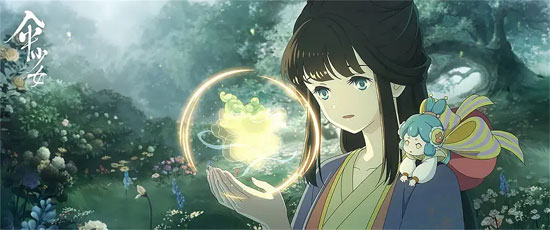
[Worldview Framework]
The very premise of where spirit entities come from and where they go remains ambiguous. Do they only enter this world at the moment an object is born? If so, how do they develop their understanding of the world and grasp human emotions?
If objects exist in isolation within a closed space, without other spirit entities to explain or introduce them, how do they learn the rules of human society? Without this foundation, how could they possibly form deeper emotional bonds with their owners?
The state of the spirit when the owner uses the object is also poorly designed. In Wangui’s story, the spirit and owner can interact—the spirit can control the owner through its own will, thereby altering the physical world and reality. In this dynamic, the spirit and owner’s wills engage in a constant tug-of-war.
Yet other objects appear devoid of free will. Even when they understand the concept of “free will,” they advise the protagonist to pursue it—yet all spirits ultimately obey their owners’ commands. The greatest act of defiance is the small scissors secretly slipping into a backpack to follow their owner out.
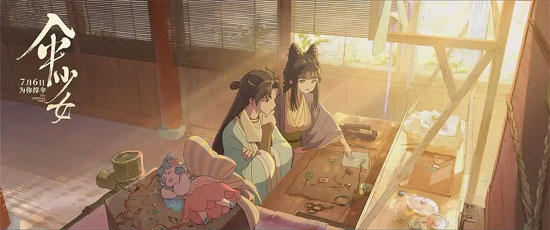
Thus, we cannot determine whether an object spirit’s inherent nature—be it good, evil, righteous, or wicked—is innate, shaped by its owner, or forged by the object’s own energy.
Objects themselves possess no inherent moral quality, so the spirit should align with the current owner’s will. Yet if the owner changes, the spirit’s will inevitably shifts; if the owner is absent, the spirit becomes nothing more than a living slogan machine reciting the owner’s ancestral creed daily. This undermines the very purpose of establishing the spirit character.
Therefore, the film’s design grants each object spirit its own distinct will, albeit one primarily dedicated to serving its master—akin to advanced artificial intelligence.
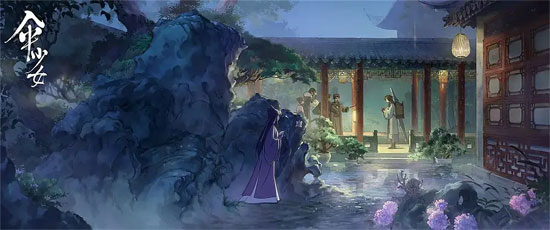
Yet if this is the case, combined with Xiao Jianzi’s mention that high-level object spirits can manipulate objects themselves and even control similar items, it becomes absurdly plausible that an object spirit could seize control of the entire human world if it so desired. For instance, Wang Gui and the bronze mirror clearly possess immense power. Their hatred toward humanity shouldn’t be confined to destroying the spirit world and the Treasure Chamber—unleashing bloodshed across human society would be a far more logical objective.
However, the creators clearly couldn’t handle such a wildly ambitious narrative direction. Consequently, they avoided confronting the world they’d created, forcing a downgrade in dramatic conflict, compressing the world-building, and limiting character abilities. This confined the film to the realm of spirit toys playing house.
This reveals the chaotic state of the script’s development phase. While the proposed setting brimmed with potential, the creators’ limitations prevented its full realization. They resorted to clumsy patches, ultimately cobbling the film together into a patchwork of mismatched elements.
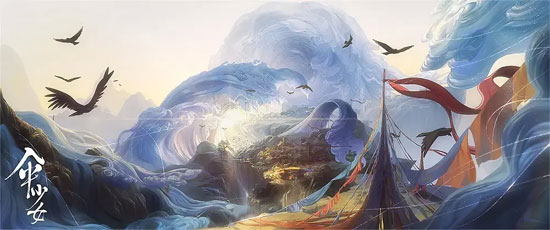
[Character Portrayal & Plot Framework]
The completeness and charisma of fantasy film characters heavily rely on the inherent tension within their backstories. Consequently, with the film’s foundation already poorly constructed, “The Umbrella Fairy” predictably delivers three utterly lackluster protagonists.
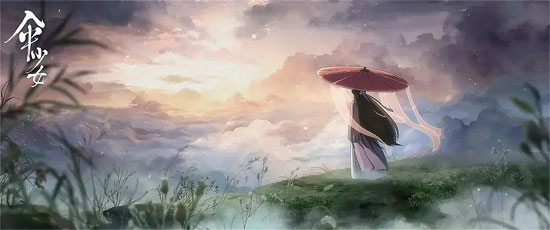
The worst is undoubtedly Qing Dai. As the female lead, she remains utterly unclear about her own objectives throughout the entire film. Her opening vow is to carry on the legacy of the sword’s former owner (a princess from a previous dynasty) by protecting the Black Jade Sword and its spirit, Wanggui.
But the princess’s character is fundamentally absent. She exists only in the prologue’s PowerPoint slides. We know nothing about who she truly was, the nature of her relationship with Qing Dai, or how she influenced her. This leaves Qing Dai’s strongest motivation entirely illogical—nothing more than a perfunctory ideological stamp.
Moreover, the princess claimed to desire a world free from war, thus bestowing this mission upon Qing Dai. Yet as a princess of a fallen kingdom, she herself could neither alter the current state of war and peace nor influence future events. To claim that merely storing two artifacts constituted a “great contribution to peace” is laughable.
If she recognized the Black Jade Sword’s power to corrupt minds, why not destroy it? Placing it in the Hall of Treasures only ensures it will be found by future generations. Is pinning hopes on a spirit entity whose very existence she doubts truly the best solution? Such a plot device, built purely on emotion and slogans, would be dismissed as childish even in a children’s picture book.
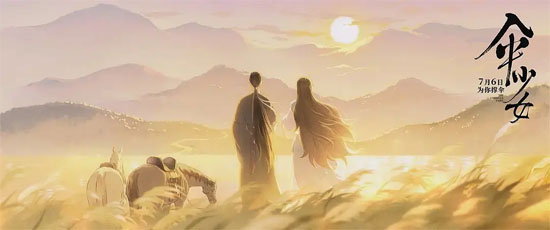
Moreover, Qing Dai never demonstrated any ability to safeguard the Black Jade Sword. She didn’t even understand the rules of the spirit world and was powerless against Wang Gui’s rebellion. This is the “princess entrusted with the realm’s future,” the heroine upon whom hopes for the world’s peace rest?
Yet despite their supposedly deep bond in the setting, Qing Dai and Wang Gui share no meaningful emotional connection. We’re not even sure if they knew each other before or how well they understood one another. Everything is vague, chaotic, and fragmented—yet this is supposed to drive Qing Dai’s subsequent actions. I’ve never seen such a laughable script.
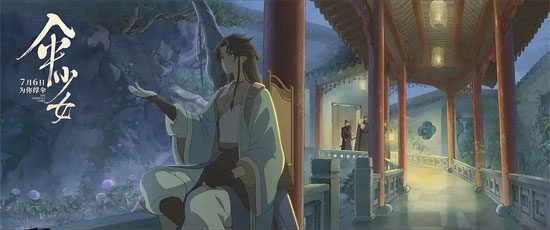
Qing Dai thus sets off, bearing the late master’s will from the PowerPoint presentation, to pursue the new “master” Wang Gui—a quest whose purpose remains entirely unclear. What follows is a standard road movie sequence: encountering more stories of spirit-bound objects along the way, eventually tracing Wang Gui’s footsteps, and returning to the Nianwu Pavilion.
Yet every development along the way is utterly disconnected from Qing Dai. She plays no part in the unfolding of the three mini-stories: the deceased owner and his fiancée, the dancer parting from her mother, or the military governor grieving his dear friend. She remains purely an audience perspective, contributing nothing to the plot progression. She doesn’t even gain any skills or resolve from these three experiences.
For a film’s lead character to be the ultimate NPC—standing detached throughout like a human prop—is nothing short of an epic joke.
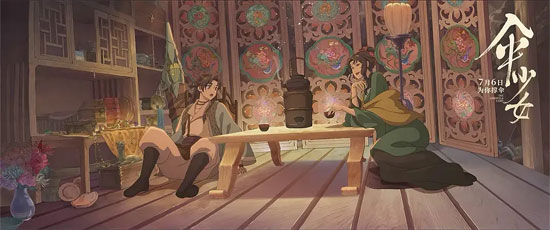
After wasting time on three tedious, pointless tales, the creators seemingly remembered the neglected main plotline. They hastily orchestrated a scene where Wangui possessed the military governor’s maid to attempt an assassination, finally allowing Qing Dai to track Wangui’s whereabouts (though it was really Wangui forcing herself to be found).
But this severely undermines the established rules: not only can spirit entities directly manipulate objects, they can even possess humans outright. What a terrifying existence that would be.
Why then did Wangui wait so many years to act? If she truly merged with her host’s consciousness, why would she actively seek slaughter? If she truly understood political intrigue, how could she remain unaware of the true reason behind the general’s suicide? If she resented the power structure established after the general’s death, wouldn’t a coup be a far more efficient solution? If she possessed such formidable magical power, why not simply possess Moyang to take her out, or possess the current emperor to act as she pleased? Wouldn’t that be far more convenient?
Is there a single question here that the creators can answer? The script is rougher than toilet paper, yet they still have the audacity to sell it on the market.

This further proves Wang Gui is nothing but a plot device—merely a crisis generator devoid of any depth whatsoever.
Why would she make a deal with the bronze mirror after attaining such immense power? And why trade her physical form? What feelings did she harbor for Qing Dai that suddenly drove her to sacrifice herself to save her?
Every shift in this character during Act Three feels abrupt—her motivations are unknown, the conflicts contrived, the emotions slapped together. The entire segment seems like something the director scribbled in a fit of inspiration. A thorough review is recommended. Attempting to replicate the success of the “Green Snake” series by exploring the dual-sided bond between two women, yet failing to steal even a fraction of its substance—it’s both clumsy and ill-conceived.

[Jiaoqi Literature]
Finally, let’s discuss the film’s male lead, Mo Yang, who epitomizes why this production suffers from such poor quality and chaotic storytelling. He too is a hollow character—devoid of backstory and lacking even basic characterization. Yet his significance lies in his profession and identity: he is a human craftsman.
This role naturally fills the film’s glaring void of “masculinity,” “dominance,” and “fatherhood.” He “repairs” artifacts, ‘civilizes’ spirit entities, and “guides” their masters—embodying the alpha male, the patriarch, the savior.

Most crucially, he consistently serves as the conduit between the spirit and its master. He is the one who truly holds the power of speech and receives the gratitude from both sides.
Thus, the entire film offers no hint of liberation for the spirit objects. They either depend on Moyang, are controlled by him, or carry on his wishes after his death. All exist as appendages to his being—he is the true, sole, eternal “master,” and the Spirit Object Pavilion is his harem.
To emphasize how vital the master’s protection is to his servants, the film even fabricates hardships to force him into self-sacrifice.

The villain Tong Jing appears out of nowhere—suddenly turning dark, suddenly rebelling, suddenly wielding uncontrollable power—all solely to create a stage for Moyang to showcase his might in a single decisive battle. This exists only so that audiences, both on and off screen, will remember his sacrifice afterward, remembering that he is the most important one.
The female lead, Qing Dai, initially lived for the princess, then for finding Wang Gui, and ultimately for Mo Yang. From serving the powerful, to pursuing grand narratives, to finally submitting to a sexual relationship and a male father figure—what a character arc, what growth. This is the understanding of art presented by our ever-rising domestic animation industry in 2024.
Most chillingly, the post-credits scene reveals Moyang’s reflection in the bronze mirror. The line “Patriarchy hasn’t vanished—it’s merely become more covert” was actually filmed as a positive statement in The Umbrella Fairy.

Last year, I also deemed the animation “Wish” trash. In its finale, the queen willingly sealed her husband within a mirror. Now, domestic animation treats this scene as a tear-jerking moment of “unresolved sorrow.” It turns out our vanguard is still so far from others’ basements.

[Between the Lines]
It’s glaringly obvious that “The Umbrella Fairy” carries a “grand mission” beyond its own shoddy narrative: to “promote traditional culture through cultural relics.”
Does the creative team seriously not grasp which entity needs the other more? Even if traditional culture has temporarily waned in this fast-paced era, it certainly doesn’t require promotion through cheaply produced romance fluff.
The creators likely feared their own writing was too weak to include in the actual film, yet still craved the buzz. So they resorted to tacking on a PowerPoint slideshow during the end credits. If that’s the case, they might as well have released the credits as a standalone short—it would have been more watchable than the main feature.

[On Domestic Animation]
For years, the domestic animation industry has been like a small boat tossed by waves. Though more and more members have boarded its deck, its influence and strength have scarcely grown. To understand why, we must examine each newcomer individually—assessing their impact on the entire industry and its ecosystem.
The Umbrella Fairy lays bare the most glaring disconnect: domestic animation creators remain fundamentally detached from filmmaking practices. This disconnect extends beyond mere mindset, creative awareness, or writing skills—it permeates aesthetics, attitude, and core values. This disconnect is a pervasive issue across much of China’s animation output. “The Umbrella Fairy” is a prime example of a delusional endeavor: it lacks the narrative pacing of genre cinema, fails to deliver sufficient genre elements, yet still aspires to carry the weight of a feature-length film.

Despite clocking in at just 90 minutes, the film feels painfully drawn-out. The first 30 minutes deliver zero information—essential plot setup and progression are neglected while pointless scenes dominate. The sheer clumsiness in single-scene staging and shot composition is glaringly obvious. It took me ages to adjust to the characters’ awkward dialogue rhythms and reaction timings. It’s clear the creative team likely lacks even basic short-film production experience, lacking the most fundamental cinematic language skills.
Moreover, contemporary Chinese animation favors a half-concealed narrative style, deliberately withholding information to create an air of mysterious, profoundly meaningful stupidity.
Audience curiosity about a story’s hidden layers presupposes an engaging surface narrative. Yet when a group of amateurs lacks even basic storytelling ability, their attempt to steer attention toward a supposedly deep worldview or cinematic universe is utterly laughable.

Finally, we must mock the film’s marketing labels like “2D animation” and “the last bastion of integrity.” Setting aside the discrepancy between the actual art style and what was shown in the main poster and teaser trailer…
For 2D animation to hold up, every visual element—from character design and scene composition to foundational settings—must be built around it (like “Dahufa”). Yet this film’s character models, especially the numerous supporting cast, and its action sequences all feel like 2D visuals desperately cosplaying 3D. The final battle scene, particularly the copper mirror sequences, is so blatantly straining for a 3D aesthetic that it’s cringeworthy.

Compounded by severely inadequate production budgets and animators with subpar aesthetics, the characters are so hideously designed they’re painful to look at. The scene where the spirit creatures gather to help their companion return to the real world is a kaleidoscope of grotesque ugliness.
A cluster of characters rendered in a crude, unimaginative style reminiscent of the low-budget anime “Serial Number” is nothing short of visual assault. If the creators had even a shred of appreciation for China’s 5,000-year heritage of cultural artifacts, they wouldn’t have designed these scraps to represent them.

With every character looking like a mobile game character, yet they still preach about intangible cultural heritage. If foreign friends saw “The Umbrella Fairy” and thought this represented Chinese artifacts, the entire team would be guilty of “historical nihilism.”

Their aesthetic sensibilities rival those of a children’s cartoon, their cinematic vision is as shallow as a kindergartener’s, and their creative goals seem limited to crafting emo captions for elementary schoolers’ QQ spaces. Their methods involve indulging male creators’ self-gratifying fantasies, while their tactics rely on cashing in on classic cultural trends. May they meet their end with no place to bury their remains.
Please specify:Anime Phone Cases » The Umbrella Fairy 2024 Film Review: Cinema lags 20 years behind, while romance novels lead by 200 years.